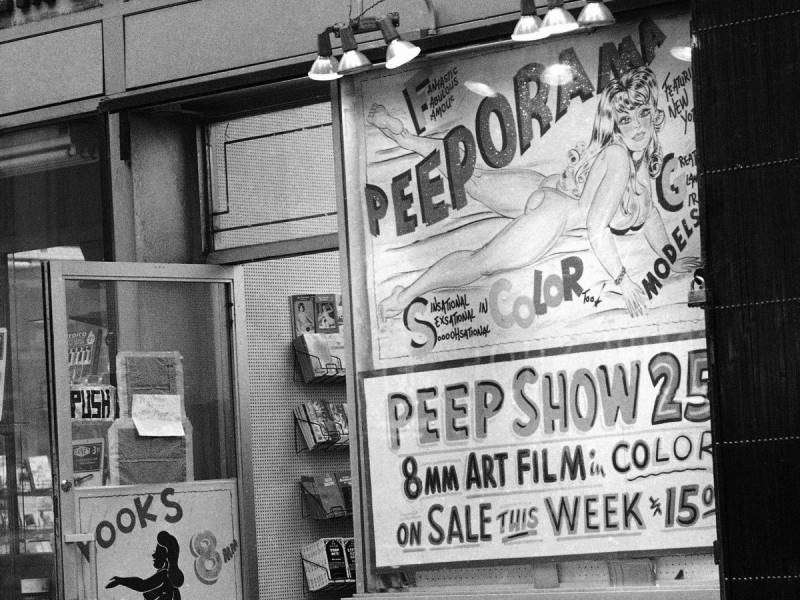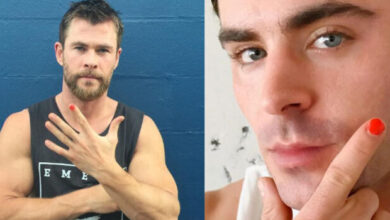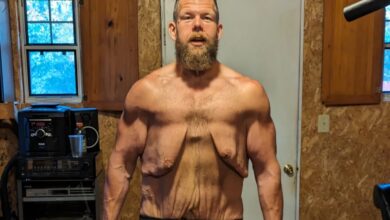Peep Shows, Sex, And Crack: 27 Photos Of Times Square At Its Lowest

Before Times Square was a global attraction, it was home to sex shops and drug dealers in what was considered one of the most dangerous neighborhoods in New York City.
Today’s Times Square is known as the iconic tourist destination of New York, becoming the most visited place on the globe and attracting over 131 million visitors a year.
But before it became home to Broadway shows, chain restaurants, and television studios, it spent the latter half of the 20th century as the symbol of New York’s decay.
Initially arising as a cultural center of theaters, music halls, and boutique hotels, Times Square fell into disrepair during the Great Depression. Adult theaters and sex shops then took over while the neighborhood became an open market for prostitution and drugs.
By 1984, Times Square was one of the most dangerous areas of the city, with over 2,300 crimes committed every year in a one-block radius. We look at this Times Square of yesteryear, where chaos and seediness reigned supreme:
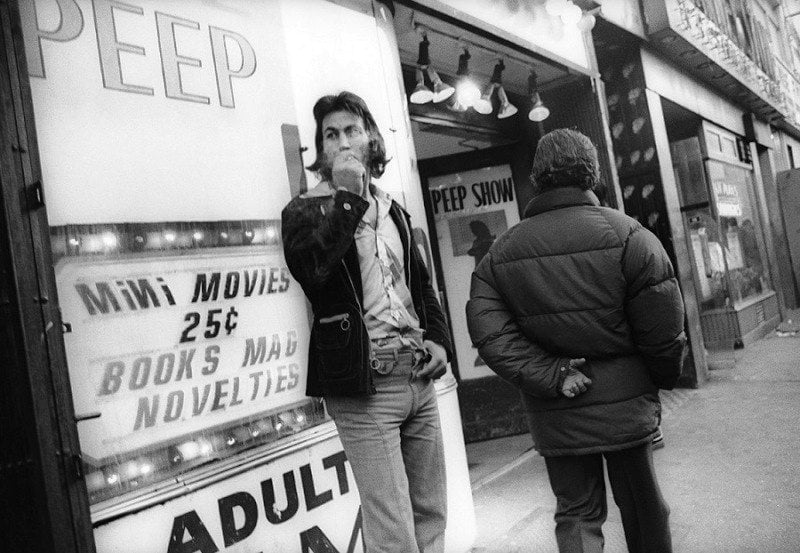 Twenty-five-cent peep shows were the first adult stores to arrive in Times Square beginning in 1966. Enormously profitable, they opened the door for adult movie theaters, strip clubs, and sex stores.
Twenty-five-cent peep shows were the first adult stores to arrive in Times Square beginning in 1966. Enormously profitable, they opened the door for adult movie theaters, strip clubs, and sex stores.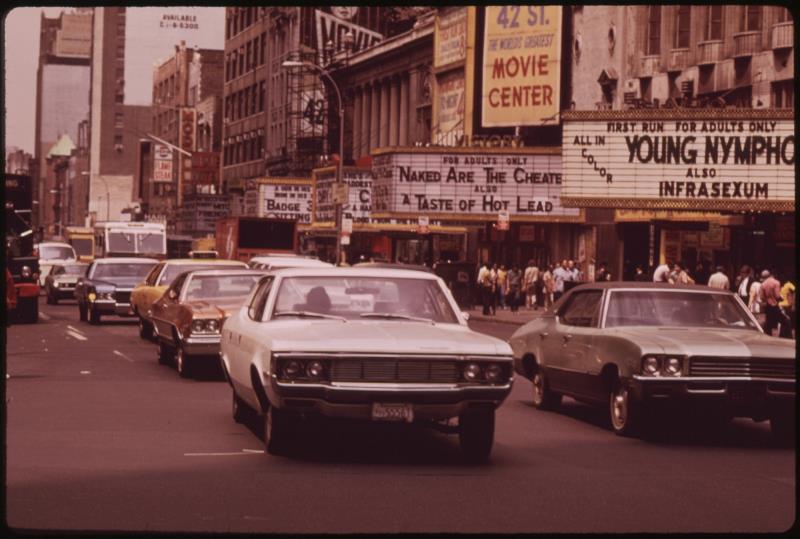 As Times Square took on a new feel, the businesses of the previous generation fled. As the Guardian describes, “Times Square’s venerable old theatres and spectacular movie palaces were torn down for office buildings or allowed to slowly rot away, showing scratchy prints of cheesy second-run films or pornography, which any casual visitor might have thought was the city’s leading industry.”
As Times Square took on a new feel, the businesses of the previous generation fled. As the Guardian describes, “Times Square’s venerable old theatres and spectacular movie palaces were torn down for office buildings or allowed to slowly rot away, showing scratchy prints of cheesy second-run films or pornography, which any casual visitor might have thought was the city’s leading industry.”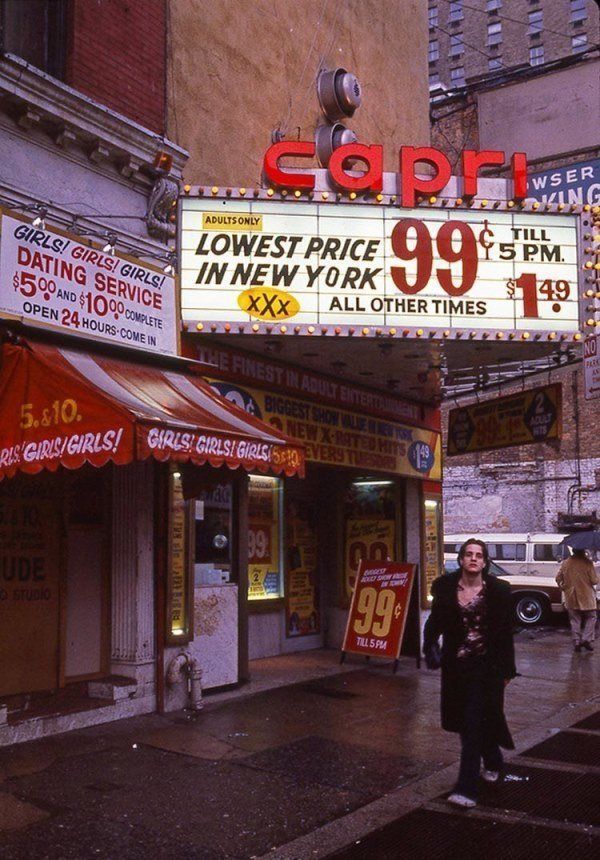
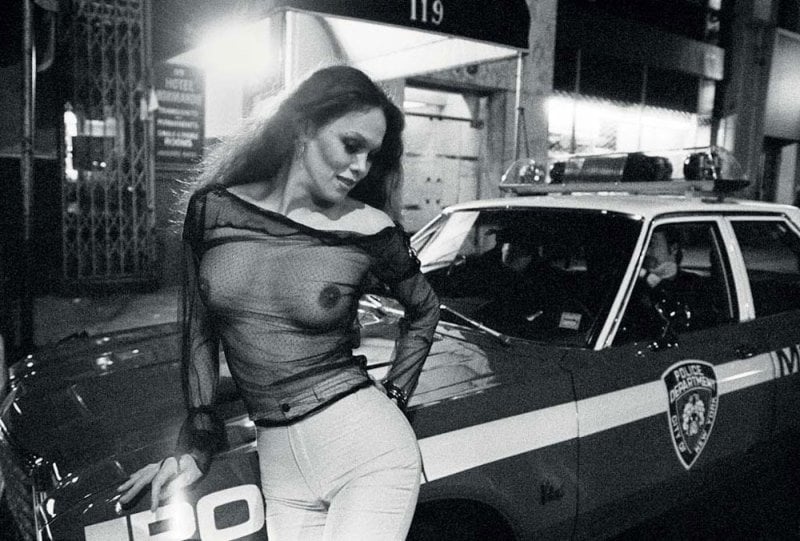 The sex trade arrived shortly after adult stores. With its proximity to highways and subways (and thus an unhindered flow of people), prostitution flourished without interference from law enforcement. In the photograph above, a prostitute rests on the hood of a police car in 1985.
The sex trade arrived shortly after adult stores. With its proximity to highways and subways (and thus an unhindered flow of people), prostitution flourished without interference from law enforcement. In the photograph above, a prostitute rests on the hood of a police car in 1985.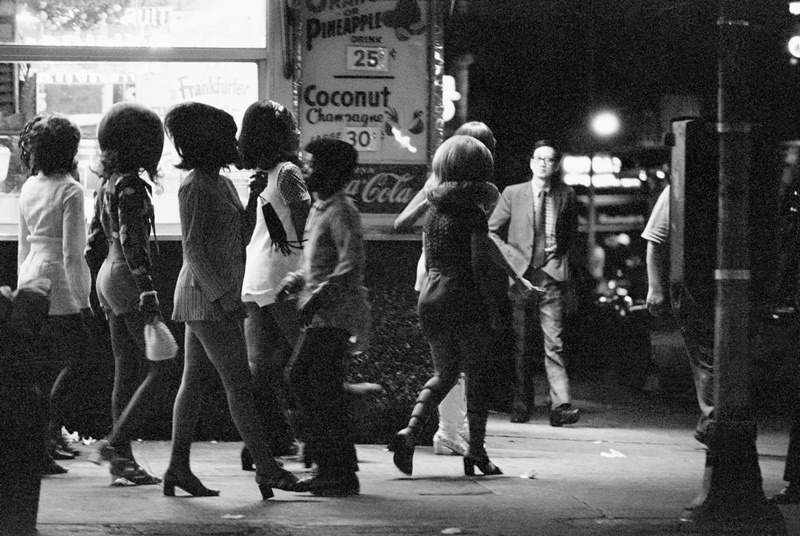 A group of prostitutes walk through the side streets of Broadway and Times Square in New York in the summer of 1971.
A group of prostitutes walk through the side streets of Broadway and Times Square in New York in the summer of 1971.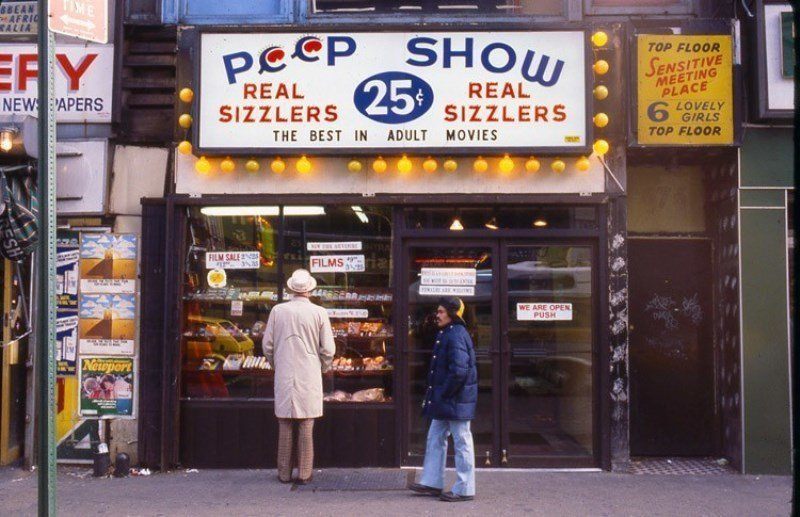 A man looks at the offerings of a peep show store adjacent to a “sensitive meeting place” with “lovely girls.” Brothels, typically operated by organized crime, ran in the open without any legal repercussions.
A man looks at the offerings of a peep show store adjacent to a “sensitive meeting place” with “lovely girls.” Brothels, typically operated by organized crime, ran in the open without any legal repercussions.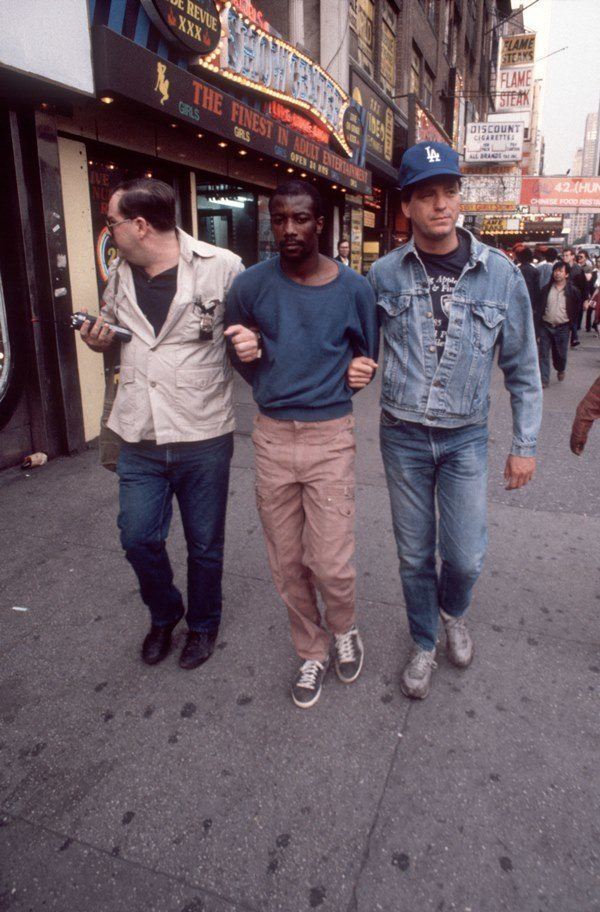
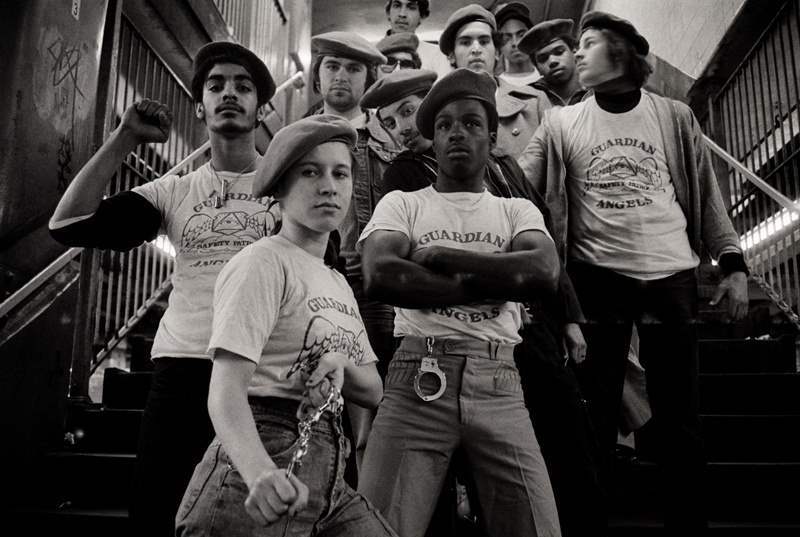 Crime also became a chronic issue for the subway stations at Times Square. Above, a team of the Guardian Angels — a volunteer patrol group dedicated to making New York’s subway system safe — get ready to go on patrol in 1980.
Crime also became a chronic issue for the subway stations at Times Square. Above, a team of the Guardian Angels — a volunteer patrol group dedicated to making New York’s subway system safe — get ready to go on patrol in 1980. The homeless populations of Times Square and neighboring Port Authority skyrocketed during the 1970s and 1980s. Combined with the pervasiveness of the drug and sex enterprises, this proved to be a chaotic brew of ingredients for the area.
The homeless populations of Times Square and neighboring Port Authority skyrocketed during the 1970s and 1980s. Combined with the pervasiveness of the drug and sex enterprises, this proved to be a chaotic brew of ingredients for the area.
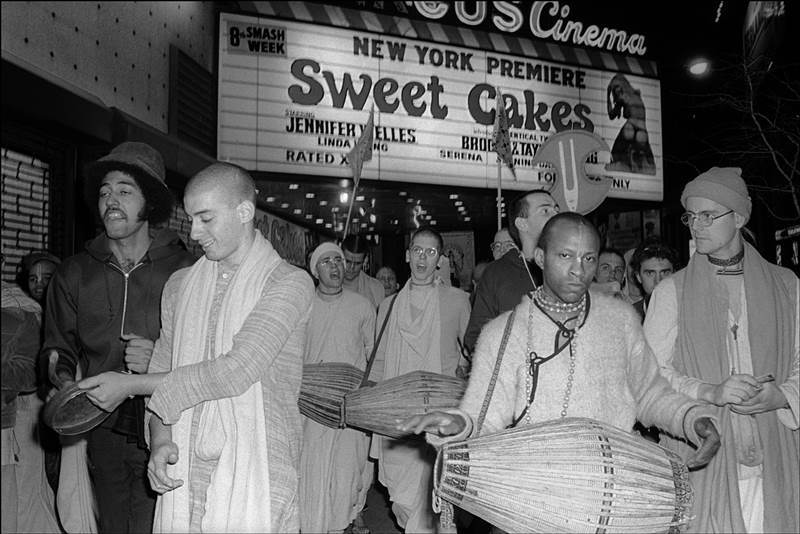 In 1976, a group of Hare Krishna followers sing and play instruments in Times Square under the marquee of an adult theater advertising the film Sweet Cakes.
In 1976, a group of Hare Krishna followers sing and play instruments in Times Square under the marquee of an adult theater advertising the film Sweet Cakes.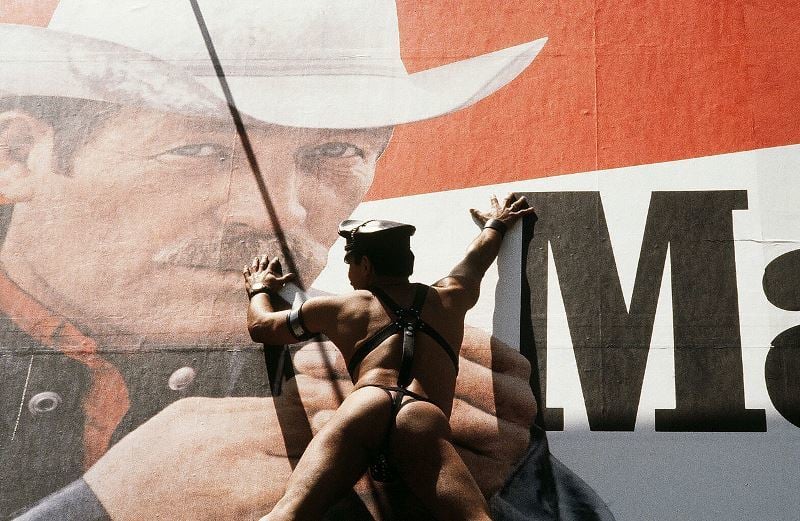 The neighborhood also became home to non-traditional street acts. A man adorning only a leather hat and thong scales a Marlboro billboard on 44th Street in 1980.
The neighborhood also became home to non-traditional street acts. A man adorning only a leather hat and thong scales a Marlboro billboard on 44th Street in 1980.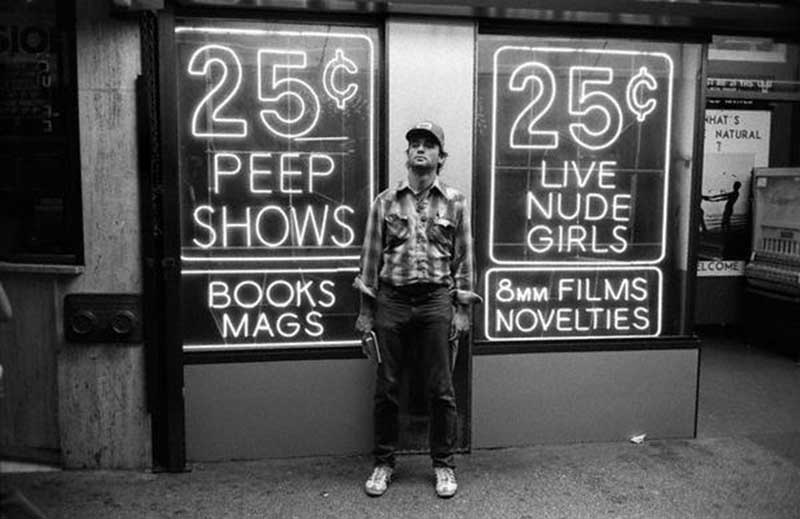 Actor Bill Murray poses in front of the famous 25-cent peep shows of Times Square in the mid-1970s.
Actor Bill Murray poses in front of the famous 25-cent peep shows of Times Square in the mid-1970s.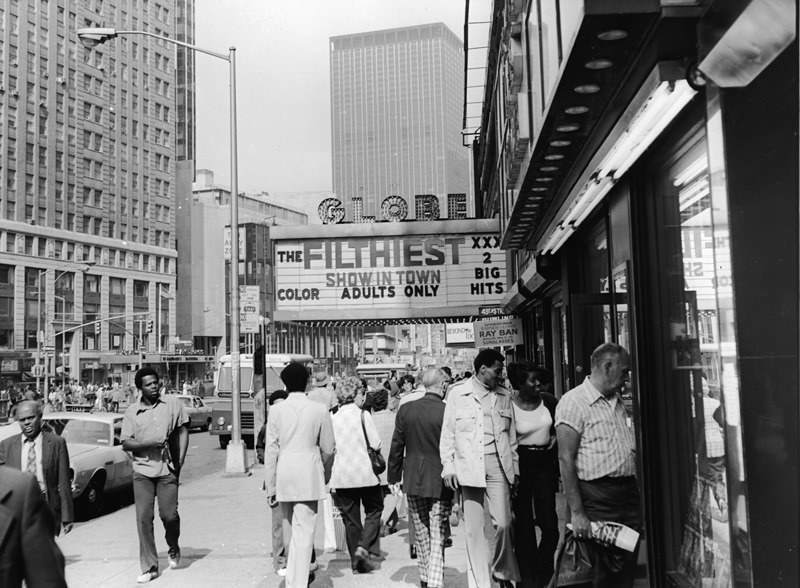 In 1975, tourists look into the windows of Times Square as they pass under the marquee for the Globe theater advertising the “filthiest show in town.”
In 1975, tourists look into the windows of Times Square as they pass under the marquee for the Globe theater advertising the “filthiest show in town.” Not everyone was happy about Times Square’s transition into a center of adult entertainment, including Women Against Pornography (WAP), which marched through the neighborhood in 1979.
Not everyone was happy about Times Square’s transition into a center of adult entertainment, including Women Against Pornography (WAP), which marched through the neighborhood in 1979.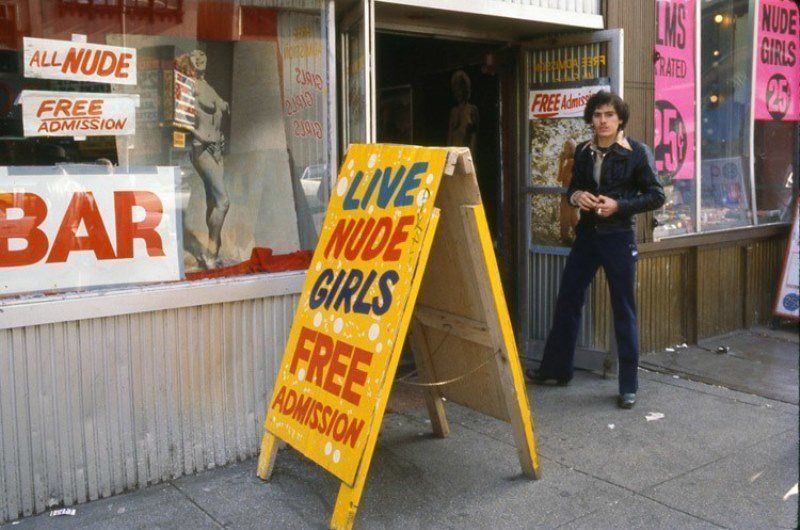 A man stands outside of a strip club on 42nd Street in the late 1970s.
A man stands outside of a strip club on 42nd Street in the late 1970s.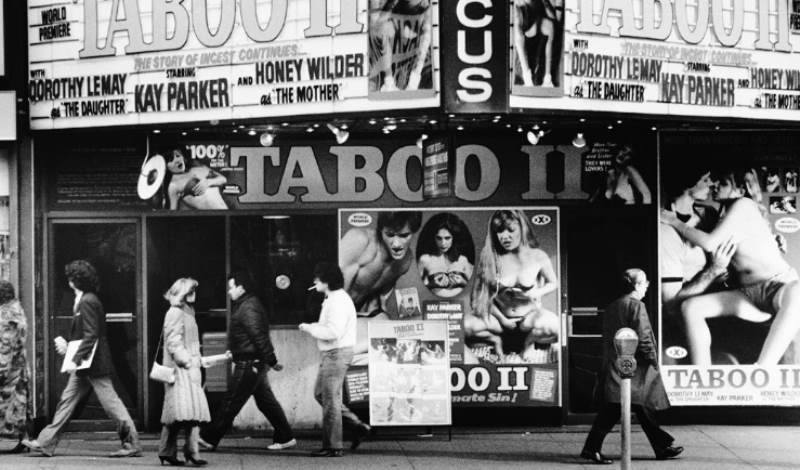
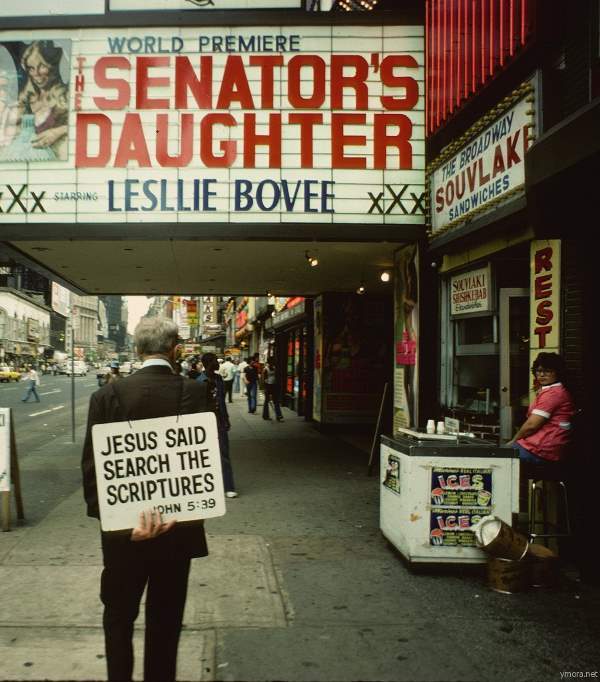

 Women working in the private viewing booths in Times Square in 1997.
Women working in the private viewing booths in Times Square in 1997.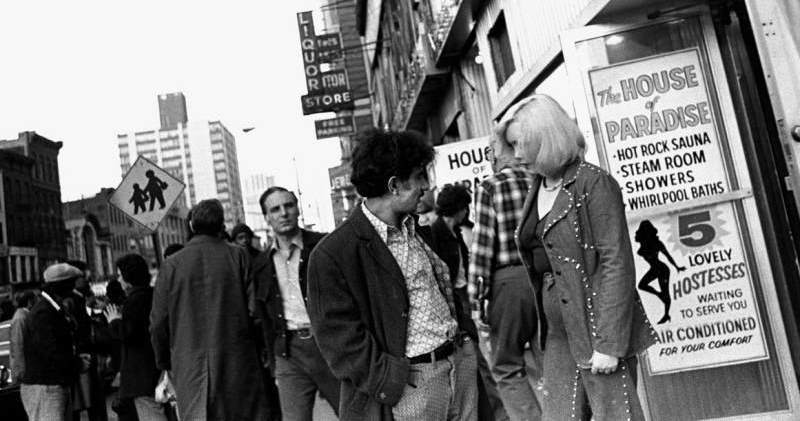
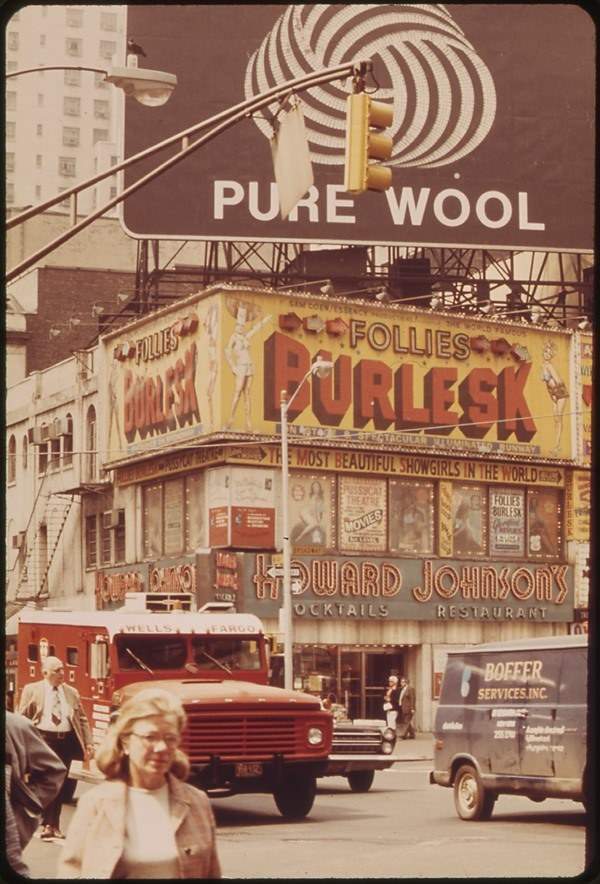
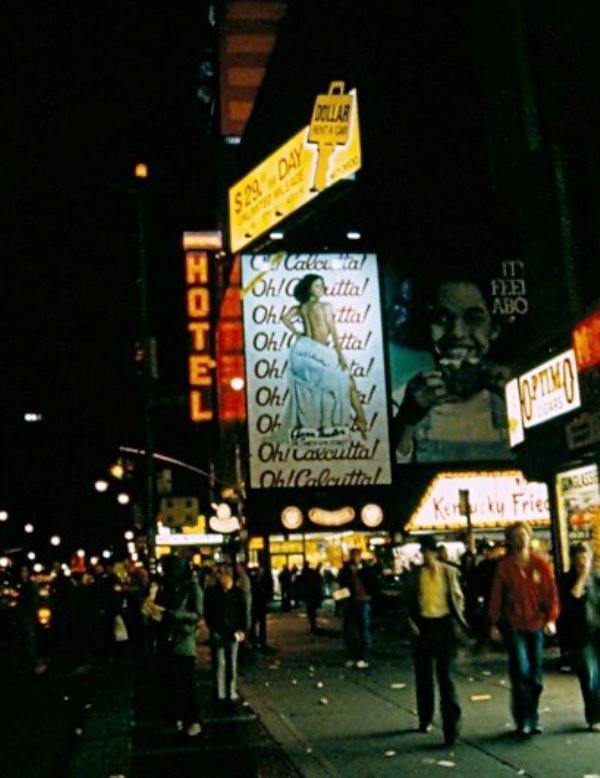
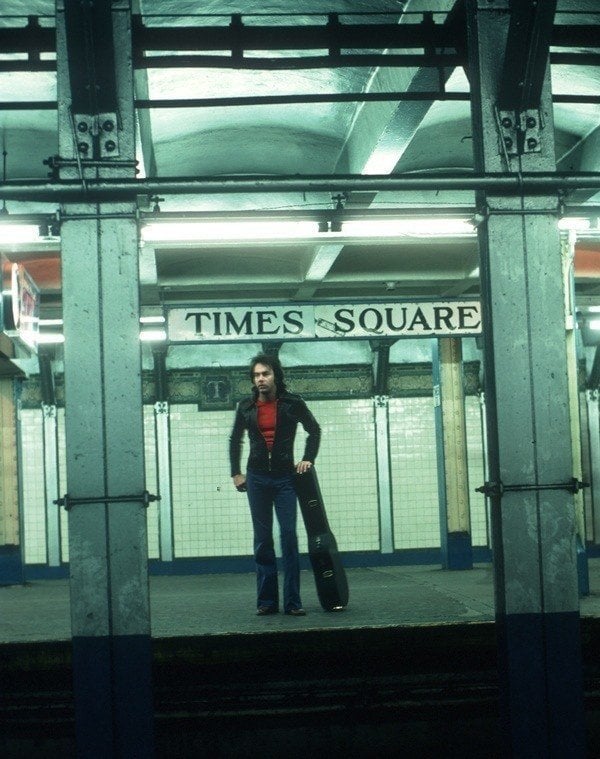
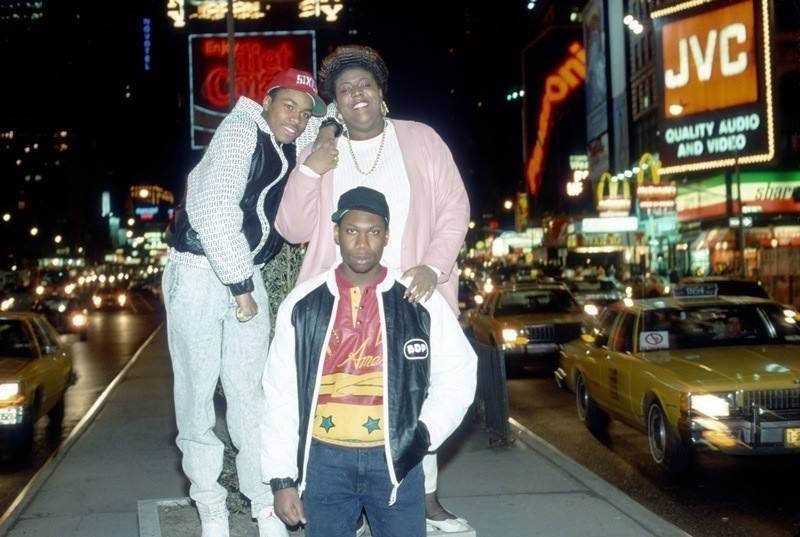 Artists KRS-One and D-Nice pose for a photograph in Times Square in 1988.
Artists KRS-One and D-Nice pose for a photograph in Times Square in 1988.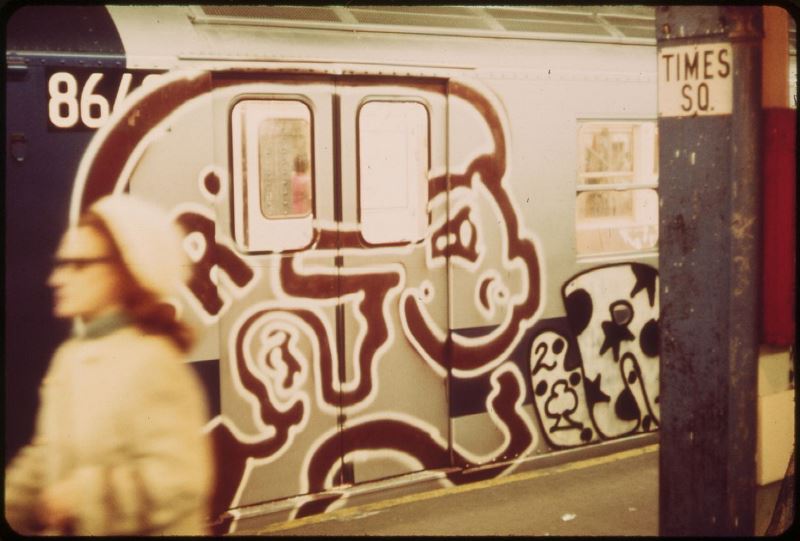 A graffiti covered 7 train passes through the subway station at Times Square.
A graffiti covered 7 train passes through the subway station at Times Square.